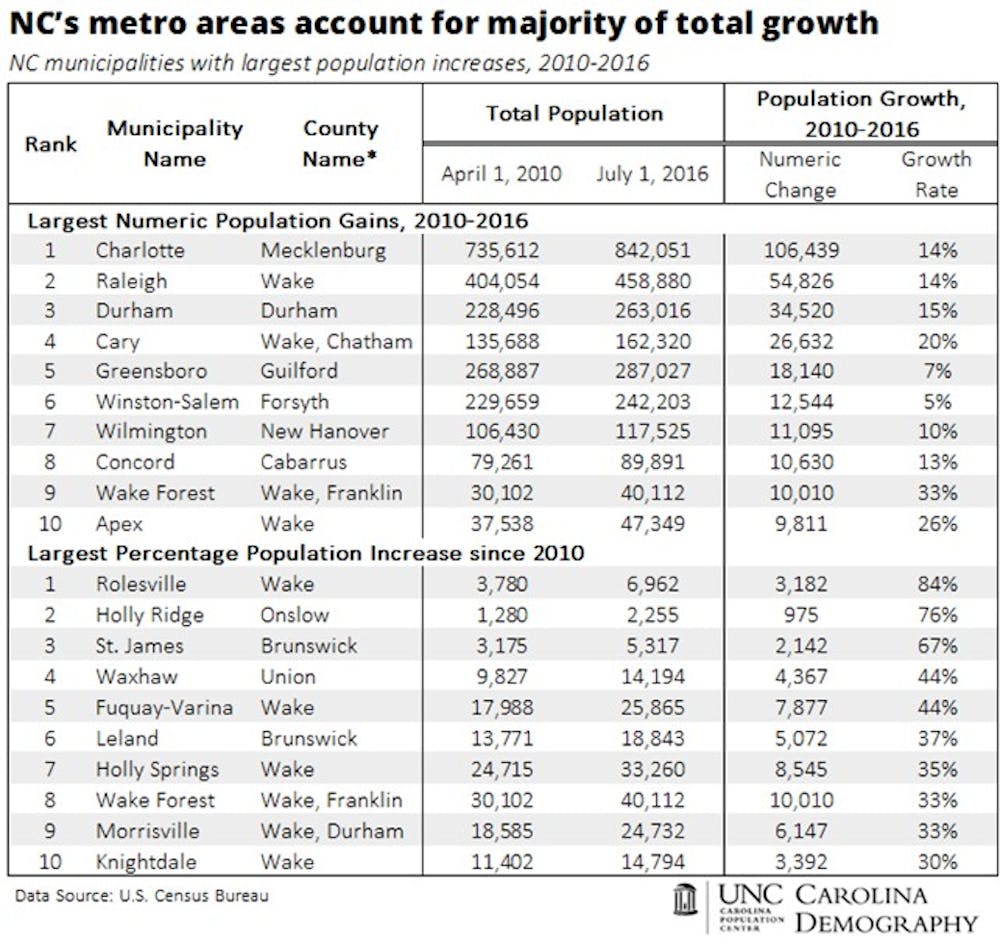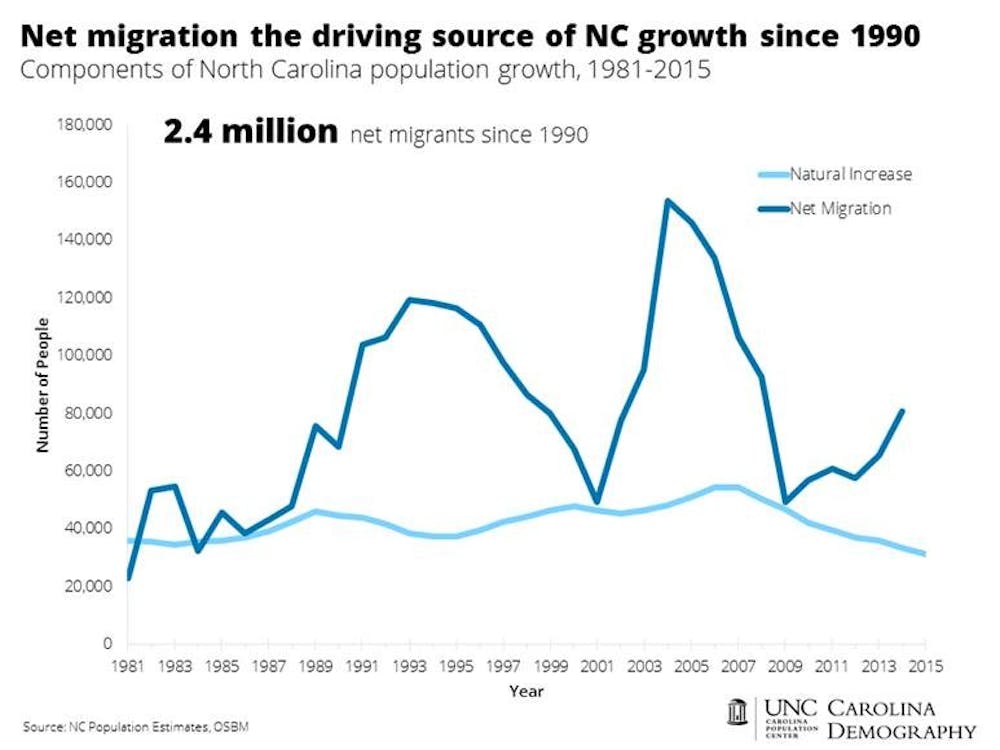As North Carolina’s population steadily grows, it is possible the state will gain an additional seat in the U.S. House of Representatives.
The N.C. Office of State and Budget Management predicted the state’s population will be over 12 million by 2035, a net increase of nearly 3 million since 2010. Mecklenburg and Wake counties are predicted to be responsible for the majority of this growth.
A large population increase could result in greater representation in the House, but the potential location of this new district is unclear.
Jessica Stanford, a demographic analyst at Carolina Demography, said over 70 percent of North Carolina’s population growth has been concentrated in the Triangle and Charlotte area.
“We’re seeing a lot of growth in the suburbs surrounding these areas, so smaller towns in Wake County have been growing quite a bit, such as Zebulon, Holly Springs and Rolesville,” she said. “You’re even seeing this growth trickling into rather rural areas that are in the proximity of the Triangle. Stem in Granville County was quite small, but in the last year it grew by almost 100 people, which is a lot for it, and it’s about 25 minutes from Durham.”
Stanford said since growth is concentrated in the economic powerhouses of the state, it is creating jobs and improving North Carolina’s overall economic health. She said some of the growth is driven by out-of-state individuals.
“People with an associate’s degree or higher, 60 percent of them originally were born out of state,” she said. “We’re also getting migration from other counties in the state that are not as economically viable or strong, and some individuals are choosing to move to the Triangle and Charlotte as a way to find more economic opportunities.”
Stanford said the increased out-of-state migration reflects a lack of skilled workers in North Carolina.
“The state is looking to find new solutions to increase the level of a skilled workforce in the state so we don’t have to rely on so much out-of-state migration to have this skilled workforce — because so much of it relies on people from Virginia, Maryland, Florida, Georgia and even as far as New York,” she said.





